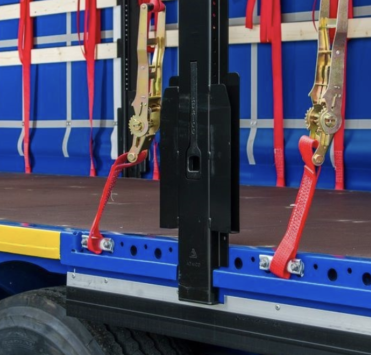What is the CEMT (ECMT): International permit for freight transport

What is CEMT (ECMT)
CEMT (ECMT) stands for European Conference of Ministers of Transport. It is an international organisation, established in 1953, which aims to coordinate transport policy between member countries and to improve international transport links.
One of the key activities of the CEMT (ECMT) is the issuing of permits for international road freight transport. These permits allow carriers from member countries to perform international transport in a number of countries without obtaining additional national permits. This list includes such countries as Ukraine, Germany, France, Great Britain, Turkey, Spain, Slovakia, Slovenia, Czech Republic, Romania, Albania, Armenia, Austria, Azerbaijan, Belgium, Bosnia and Herzegovina, Bulgaria, Croatia, Estonia, Denmark, Lithuania, Latvia, Netherlands, North Macedonia, Hungary, Georgia, Greece, Luxembourg, Liechtenstein, Switzerland, Sweden, Ireland, Italy, Malta, Moldova, Norway, Poland, Portugal and others. The CEMT Permit System (ECMT) is an important instrument in regulating and facilitating international transport links and facilitates trade between countries.
The organisation functioned as an independent entity until 2006, after which it was reorganised and became part of the International Transport Forum (ITF), which operates within the Organisation for Economic Co-operation and Development (OECD).
How to obtain a CEMT (ECMT) freight transport authorisation
To obtain a CEMT (ECMT) permit for international freight transport, several steps are required, including application and compliance with certain conditions. The procedure may vary slightly from country to country, but the general steps are as follows:
- Registration with the national transport administration: The transport company must be registered with the national transport administration of its country, which is a member of CEMT (ECMT).
- Application: The transport company submits an application for a CEMT (ECMT) authorisation to the national transport administration. The application usually includes information about the company, vehicles and planned routes.
- Quotas and allocation: The number of CEMT (ECMT) permits is limited and they are allocated to transport companies on the basis of national quotas. The national administration decides which companies will receive permits and in what quantity.
- Compliance with technical and environmental standards: Vehicles used for international transport must comply with certain technical and environmental standards. This may include requirements for emission classes (e.g. Euro 5 and above).
- Obtaining and using permits: Once a permit has been obtained, the transport company can use it to perform international transport in CEMT (ECMT) countries. Permits can be reusable and can be used for several journeys over a period of time.
Term of validity of the CEMT (ECMT)
The CEMT (ECMT) permit is normally valid for one calendar year, from 1 January to 31 December. It authorises multiple uses during this period for international road freight transport between CEMT (ECMT) member countries.
IMPORTANT
When using an international road freight transport permit issued by ECMT, the following points should be kept in mind:
- The permit is anuulised if the vehicle has not made 26 or more journeys since its issuance or if there has been no transport at all in the last 3 months.
- Permits are issued only to vehicles complying with EURO-5 and EURO-6 standards.
- The first use of the permit is allowed only for transport starting in the country of registration of the vehicle.
- The itinerary of the CEMT document must always include the country of registration. The exception is up to 3 transports without this condition.
- The permit may only be used by a vehicle belonging to the company whose name appears on the first page of the CEMT document.









